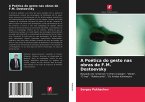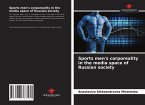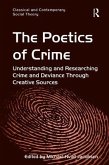The study is devoted to a little-studied topic such as the poetics of bodily behaviour of Dostoevsky's characters. Until recently, it was assumed that Dostoevsky did not attach any importance to it and was fundamentally non-imaginative in his work. However, a careful study of the non-verbal component of the writer's poetics, using the latest advances in kinesics and paralinguistics, proves that Dostoevsky was one of the first who turned to a new methodology of sensual cognition through the mastering of non-verbal communication techniques, and this meant a breakthrough into the artistic anthropology of modern times. It turned out that gestural characteristics and the object world of characters play a very important role in Dostoevsky's characterology and are sometimes the author's only "statement" about his characters. In a number of cases, these observations reveal previously unnoticed meanings, bringing the reader into other symbolic layers of the work. In fact, this opens up a new field of study of Dostoevsky's poetics. The book also provides an experience of reconstructing the iconosphere of Dostoevsky. The book is intended for researchers and a wide range of readers interested in the work of the great writer.
Bitte wählen Sie Ihr Anliegen aus.
Rechnungen
Retourenschein anfordern
Bestellstatus
Storno








